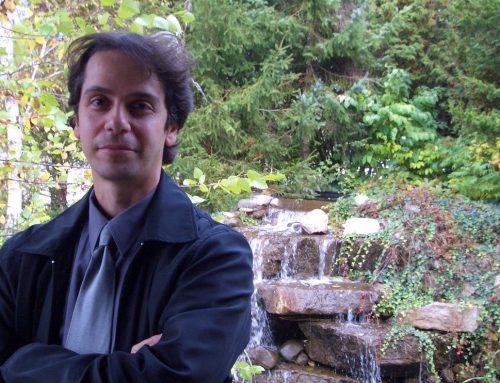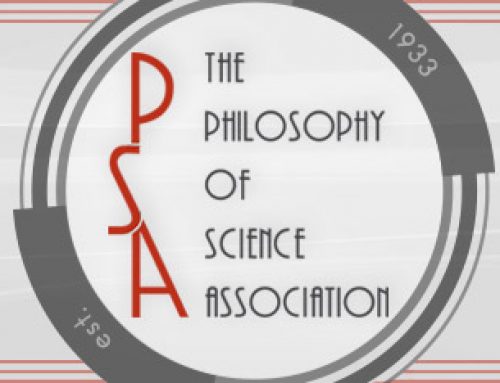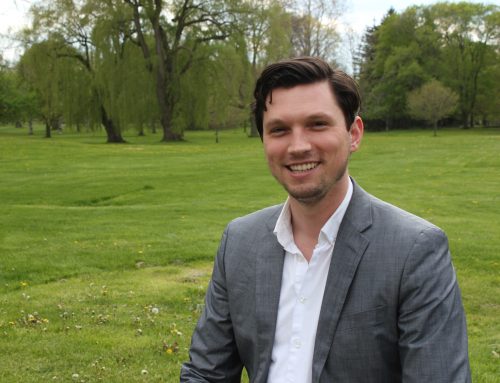Rotman Institute of Philosophy resident member Jessey Wright recently received an American Association of Philosophy Teachers Grant for Innovations in Teaching for a project, titled “A Game-Based Tool for Introducing Philosophy of Science Suitable for All Ages” that began two years ago as part of the institute’s K-12 Outreach program. We asked him to briefly discuss the project, how it came about, and where it’s going.
Philosophy of science examines questions about the nature of scientific inquiry, such as ‘how do experiments produce knowledge?’, ‘what is evidence?’, ‘what role do values play in science?’, and ‘how should science interface with publics, policy, and communities impacted by scientific research?’. These kinds of questions are ever more relevant in a world where the climate sciences guide policies, physical sciences direct technological progress, and the neurosciences shape how we see ourselves. While philosophy of science is valuable for students of all ages to become aware of and start grappling with, one challenge for teaching it is that most philosophy of science requires students to have significant background knowledge of the theories and practices of particular sciences. However, many first year undergraduate students do not have this background when tasked with introducing philosophy of science to a class of grade 6 and 7 students, as part of the K-12 Outreach program and, so, this challenge was a central concern for the outreach team.
While I study and teach philosophy by day, by night I play and design board games, escape rooms, and tabletop role playing games. At the intersection of my hobbies and my work with the K-12 Outreach program is the idea of gamification. ‘Gamification’ refers to the application of game-thinking and game mechanics in non-game contexts, such as the classroom. When the K-12 Outreach team sat down to plan an activity to introduce philosophy of science to a classroom of grade 6 and 7 students, my first suggestion was that we use a game. This lead to a novel solution to the central challenge for introducing philosophy of science: have students play a game that simulates scientific practice, and use that experience as the example for introducing the concepts.
The activity we designed requires students to infer the rules of a game based only on photographs of the game being played. The photographs are enough to infer some things for certain, but do not capture all of the rules of the game. This is similar to science insofar as the students have a limited data set and must somehow use it to infer something about the world, that is, the rules of the game. Through this method, the background knowledge required by the lesson shifts from an understanding of research in theoretical physics, as an example, to the ability to play a game and critically reflect on first hand experience.
This activity allowed us to introduce basic concepts and ideas in philosophy of science to elementary school students. We were able to discuss a variety of concepts such as how multiple theories –in this case, proposals for game rules– may all agree with the available data even though they conflict with each other. Discussion was centered on specific examples from the student’s own experiences working through the activity in small teams. For this particular idea, several groups had proposed different rules for how pieces moved on the board, and when all of the data was put together, they found several of the conflicting proposals were consistent with all of the photographs. This provided an opportunity to discuss how they would go about discriminating between the proposals, which led to a discussion of hypothesis testing and experimental design.
While the activity was successful, it has some important limitations of its own. For one, the game we designed and took photographs of was made using my game prototyping kit and requires a number of odd components, such as blank dice and a custom game board. These are things that may be difficult for instructors that want to run this activity in their own classroom to acquire. Another problem is that the activity can only really be used once within a community. If a group of students did the activity, identified a ruleset, and told their friends about it, it would spoil the effectiveness of the activity for their friends. Finally, the original activity was designed with grade 6 and 7 students in mind, and we learned that different complexity is required to engage students of different ages. If the activity were more flexible, both in terms of the components required, the rules of the underlying game, and the complexity of the task, then it could easily be adapted to suit any instructor’s needs.
The funding support from the AAPT Innovation Grant will allow me to address these challenges and develop a flexible version of this activity that could be used in any classroom. Collaborations with local high schools and the K-12 Outreach program will be important for developing and testing the flexible version of this activity. When the project is finished, I will have prepared a kit –that will be made available online– for running this activity in any classroom. If you’re interested, keep an eye on my website, specifically the resources section, the AAPT blog and the Institute blog.





